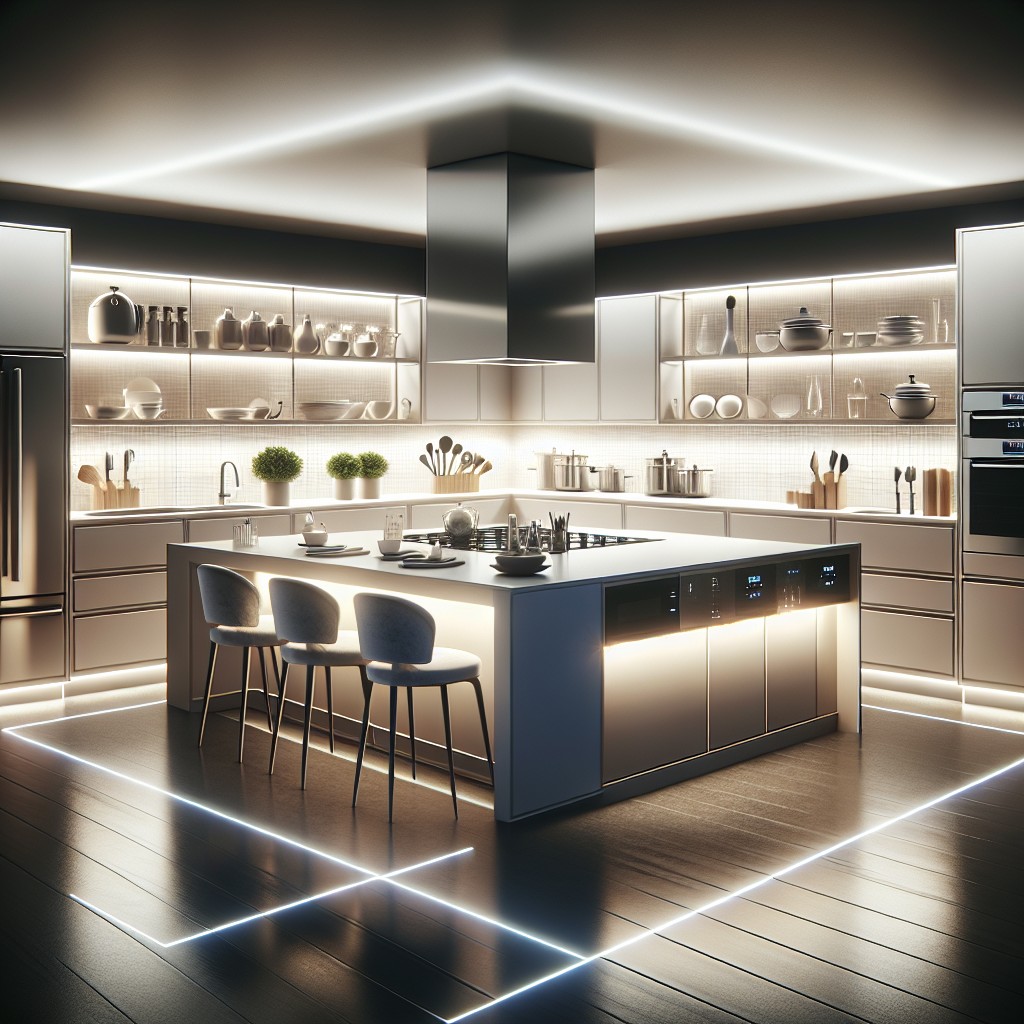Last updated on
Planning a kitchen redesign can seem daunting, but understanding key design principles will simplify the process and make your new kitchen functionally efficient and aesthetically pleasing.
Key takeaways:
- Envision your ideal kitchen with a wishlist
- Set a clear budget for your kitchen design
- Consider functionality and layout of your space
- Choose high-quality materials for durability
- Decide between DIY or hiring a professional
What's Inside
Create a Wishlist

Embarking on a kitchen redesign begins with envisioning your ideal cooking haven. Picture the mornings with a custom coffee station, or dream of a smart fridge that manages your grocery list. Do you crave a sleek island or extra counter space for your baking adventures? Perhaps, the soft close on drawers and cabinets appeals to your sense of tranquility. Or, is it a farmhouse sink that captures your heart?
Jot down these aspirations—no detail is too small. This list isn’t just a launchpad for your project; it’ll be a compass as you make design decisions. Plus, it’s incredibly satisfying to tick off those desires as your kitchen transforms. Remember, though, balance is key. While it’s fantastic to aim for the stars, keeping grounded with practical considerations will ensure your list reflects both your dreams and reality.
Set a Kitchen Design Budget
Embarking on a kitchen design journey requires clear financial parameters. A well-defined budget anchors your decisions, preventing costly detours. Start by breaking down the funds available into categories: appliances, cabinetry, countertops, lighting, and labor. Allocate a portion for unexpected expenses; a commonly advised figure is 10-20% of your total budget for those hidden surprises.
Prioritize spending on elements that increase kitchen efficiency and durability, such as energy-efficient appliances and high-quality drawer slides.
Always seek multiple quotes for labor and materials to ensure you’re getting a fair deal. Remember, investing in quality now can minimize future renovation costs. By meticulously planning your budget, you can create a kitchen that not only delights the eye but respects your wallet.
Consider How You Will Use Your Space
Functionality takes center stage when examining the layout of your kitchen. This is where form meets function; visualize the flow of movements during meal prep and cooking. A well-thought-out work triangle between the stove, refrigerator, and sink minimizes steps and simplifies tasks.
A well-thought-out work triangle between the stove, refrigerator, and sink minimizes steps and simplifies tasks.
Open plan or galley? That choice impacts social interaction and space utilization. If entertaining is your forte, an island or peninsular counter can serve as a gathering spot and facilitate conversation while you cook.
Storage solutions should be smart – deeper drawers for pots and pans, vertical dividers for baking trays, and pull-out shelves can keep essentials within easy reach and impeccably organized. Don’t forget to factor in appliance sizes and door swing directions to keep the kitchen dance smooth and accident-free.
Evaluate your habits and customize the space to suit your culinary lifestyle. Whether a coffee station, a charging nook for devices, or a designated area for your herb garden, make sure each inch of your kitchen is tailored to your personal needs.
Choose High-Quality Materials
When selecting materials for your kitchen, durability is key. Opt for countertops that can withstand the rigors of daily use, such as granite, quartz, or solid surface options. Cabinets should be both stylish and sturdy—hardwood faces with a plywood box construction are a reliable choice. For flooring, consider porcelain tiles or luxury vinyl planks that offer resilience and ease of maintenance.
Don’t overlook the hardware. Go for pulls and knobs that feel solid and operate smoothly, as they will be touched countless times. When it comes to appliances, energy efficiency and longevity are crucial factors; stainless steel remains a popular choice for its lasting qualities and sleek look.
Realize that while the initial cost may be higher for premium materials, the long-term savings from reduced wear and maintenance can make the investment worthwhile. Balancing function and aesthetics ensures your kitchen will remain the heart of the home for years to come.
Hire a Professional or Do It Yourself
Deciding between rolling up your sleeves or seeking expert help hinges on various factors. If creativity and craftsmanship are your strong suits, a DIY project might be fulfilling and cost-effective. However, it’s crucial to acknowledge the complexity of kitchen design, which often includes electrical work, plumbing, and carpentry.
On the other hand, opting for a professional can streamline the process significantly. Designers and contractors bring to the table a wealth of experience, ensuring that common pitfalls are avoided and the project complies with building codes and safety regulations. Furthermore, they can provide access to trade-exclusive materials and finishes, potentially elevating the overall quality and aesthetic of your kitchen.
Consider the following before making a choice:
- Skills and Experience: Assess your level of skill for the necessary tasks. If your experience is limited to painting walls, a full kitchen redesign may be too challenging to DIY.
- Time Investment: Reflect on the amount of time you can commit. Professionals expedite the process, whereas doing it yourself might extend the timeline, especially if you are learning as you go.
- Tools and Equipment: Take stock of the tools required. Some equipment can be expensive or impractical to buy for a one-time job.
- Budget: Factor in the hidden costs of DIY, such as unexpected issues, compared to a clearly outlined budget provided by a professional.
By carefully weighing these points, you’ll be better positioned to make an informed decision that corresponds with your goals and constraints.




